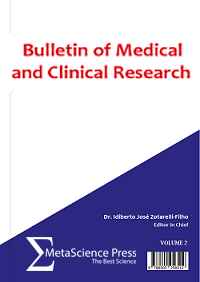Predictors of Glycemic Control in a Multiethnic Public Clinic Population
DOI:
https://doi.org/10.34256/br2016Keywords:
Glycemic Control, Mandarin speakers, glycated hemoglobinAbstract
To assess correlates of glycemic control in a multiethnic federally qualified health center population. Deidentifeddata from a federally qualified health center were examined for patients in diabetes treatment. New variables were created to assess illness burden. Bivariate testing was done to assess treatment compliance by language group. Multinomial regression modelsassessed three outcomes: uncontrolled, controlled and well controlled glycated hemoglobin (Hba1c). The conceptual framework for this study was Andersen’s Health Care Utilization Model. The sample was 1,581 patients. The average was 56. Eighty Five percentof the patients had well controlled or controlled Hba1c. Mandarin speakers were the most likely to have Hba1c controlled despite having the highest average age. Immigrant English speakers had worse glycemic control then their monolingual counterparts. All Asian subgroups had better glycemic control than Hispanics and African Americans. In the final model, the correlates of glycemic control were illness burden, time spent with a provider and health promoting activities. English speakingHispanics and African Americans continue to have worse glycemic control regardless of having access to care.
Downloads
Published
Issue
Section
License
Copyright (c) 2020 Griselda Chapaa

This work is licensed under a Creative Commons Attribution 4.0 International License.


